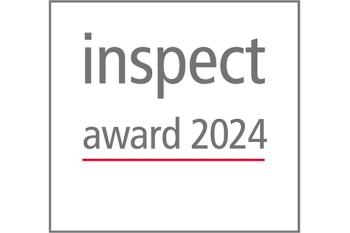Eyes Wide Open for Innovation
Smart Cameras for Real-time Image Analysis
Do innovations need time or can they be achieved in the wink of an eye? Both is true for the Berlin based vision company Chronos Vision. Their "Eye Tracking Device" has been in use onboard the International Space Station since 2004.
The head-mounted device records and measures eye movements at up to 400 frames per second, and with a spatial resolution that records even the smallest of shift in eye position. The image processing technology is based on CMOS sensors, which permit both high performance and compact size. In addition to the deployment of the space-qualified model, a more standard version of the Chronos Eye Tracker has been installed in numerous neuroscience and ophthalmologic research laboratories worldwide. The Chronos technology has also found application in other areas such as the expanding field of laser surgery.
Eye tracking plays an essential role in modern systems used for refractive eye surgery. The improved spatial and temporal measurement performance provided by the Eye Tracker has led to substantially more refined methods in this field of eye surgery. Throughout such eye operations it is imperative that the surgeon is able to track the position of the eye with micrometer precision. Accord-ingly, the control of the operation laser beam is constantly corrected by the co-ordinates of the eye as measured by the Eye Tracker. Modern surgical lasers are typically clocked at 400 ablations per second. For this reason it is not only necessary to measure eye position at this rate, but also to keep the processing time of the image analysis to a minimum. To this end the Chronos Eye Tracker delivers eye co-ordinates with a latency of 2 ms. "This brings two improvements for the surgeon, who can program his laser sequences more precisely and reduce the duration of the operation," explaines Dr. Baartz, CEO of Chronos Vision. Since its introduction a few years ago, this technology has been installed in hundreds of Lasik operation systems.
Currently Chronos Vision is introducing an even faster Eye Tracker to the market - the so-called OneKPlus Eye Tracker, which as the name suggests is capable of analyzing 1,000 frames per second and beyond. Here again, real-time image analysis is exploited to provide both high sampling rates and short latency times, enabling high speed, real-time control, for example of the surgical laser. With this new technology Chronos Vision achieves a latency time of 1 ms. Combined with the high spatial resolution in the range of micrometers this represents a major contribution to the development of the next new generation of laser surgical systems. High precision, real-time measurement of eye position is also of acute interest in the field of neuroscience where new techniques for synchronized recording and analysis of brain activity and eye movement are revealing more information on the sensorimotor and visual systems.
In order to achieve this level of performance in image processing Chronos Vision exploits the Smart-Sensor technology of the Ranger camera series by Sick/IVP. The current Ranger camera employs a sensor chip with a 1,536 x 512 pixel array, combined with a parallel processing architecture based on one ADC and one RISC processor for each of the 1,536 pixel columns. This massive, on-chip parallel processor architecture opens up the field for the development of any number of innovative and - above all- fast algorithms. The eye-tracking algorithm is one good example. By programming the sensor on so-called multi-sensor mode, high-speed online image analysis with synchronous transfer of grey-level images of the eyes is possible. Thus, the co-ordinates and radius of the pupil are output to the host computer in quasi-real-time (1ms latency), while the grey-level image sequence is transmitted via the Gigabit Ethernet interface of the camera. A further advantage of the Ranger camera for eye tracking is provided by the three to one aspect ratio of the sensor area, which permits recording of both eyes on one and the same sensor. This offers the advantage of simplified synchronous recording and reduces hardware complexity and costs. This is of particular interest in the neuro-opthalmologic research and clinical diagnosis where analysis of binocular eye movements is required.
Chronos Vision
Chronos Vision GmbH was founded in 1998 by the vestibular researcher Prof. Dr. Andrew H. Clarke, Head of the Vestibular Research Lab at the Charité Medical School in Berlin and the physicist Dr. Friedrich-J. Baartz, and is situated in Focus Mediport in Berlin-Steglitz.
Currently the company is active in two main areas. The first of these is industrial machine vision with a focus on high speed systems providing up to 30,000 images per second. This approach is increasingly of interest for system integrators and OEM companies, who are developing real-time 3D quality control systems. As a Premium Partner of Sick AG, Chronos Vision provides professional support to these customers in the efficient deployment of the Sick/IVP machine vision products.
Chronos Vision’s second field of activity is the development of high quality eye tracking equipment for use in scientific research and medical diagnosis.
The experience and competence in machine vision design and development accumulated by Chronos Vision over the years puts them in a position to provide professional expertise to their customers in both industry and science.
Contact
Chronos Vision GmbH
Wiesenweg 9
12247 Berlin
Germany
+49 (0)30 / 7694 25-25
+49 (0)30 / 7694 25-26








